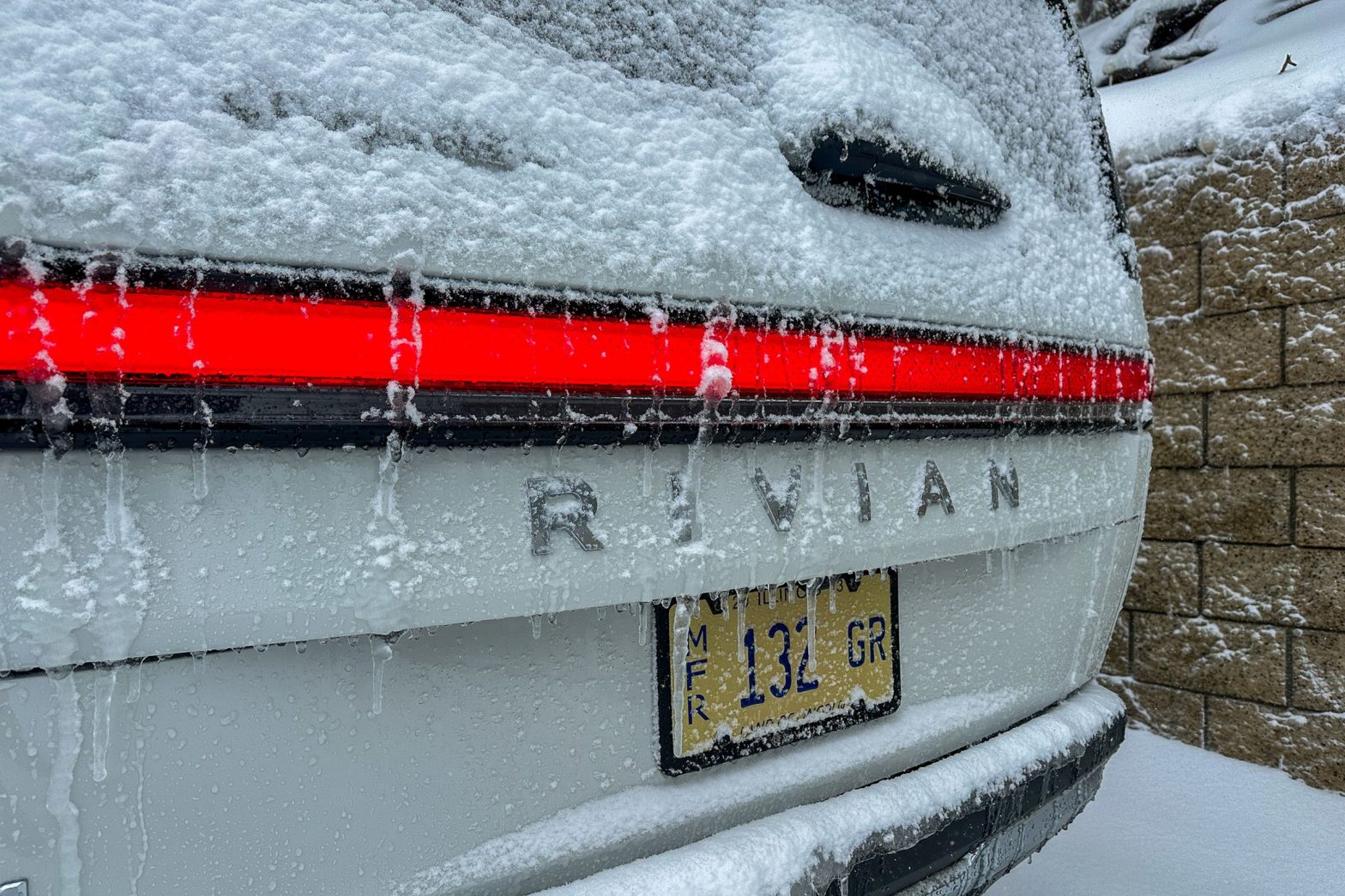/
The company makes several bold claims in its latest environmental impact report.
Share this story
:format(webp)/cdn.vox-cdn.com/uploads/chorus_asset/file/24585490/236609_Rivian_R1S_review_DGolson_0011.jpg)
Rivian released the latest edition of its environmental impact report, in which the company commits to building a new generation of electric vehicles that are even less polluting than its current generation.
Rivian said its goal is to launch a product by 2030 “with half the lifecycle carbon footprint” as its 2022 R1 vehicles, which include the R1T pickup truck and R1S SUV. “Lifecycle carbon footprint” refers to all the greenhouse gas emissions, direct and indirect, associated with a product’s activities. For an EV, that would include its production, operation, and charging, from conception to junkyard.
To accomplish this, Rivian says it will increase the percentage of recycled materials used in its vehicles. This includes using a minimum of 70 percent recycled content in steel and aluminum parts and a minimum 40 percent in recycled and bio-based content in polymer materials, both by 2030.
Rivian is expected to reveal its next-generation R2 vehicles sometime this year, with an expected production date of 2026. The company has said one of the first vehicles will be a smaller SUV priced between $40,000 and $60,000. The current lineup of R1 vehicles each start at around $80,000.
To slash its carbon output, Rivian plans to dramatically increase its use of renewable energy. The company says its factory in Normal, Illinois, will run on 100 percent renewables by 2030, as will the rest of its facilities by an unspecified date. Rivian’s charging network, of which it has around 200 plugs nationwide, will also run on 100 percent renewable energy.
Rivian uses virtual power purchase agreements, among other tactics, to achieve its environmental goals. The company commits to funding renewable power projects, like an 800 megawatts (MW) solar field built on top of a former coal mine in Kentucky and another solar project in Paris, Tenn.
The purchase agreements are considered “virtual” because the clean energy won’t be flowing directly into Rivian’s electric trucks, SUVs, or vans, or even the company’s corporate offices or factories. Rivian argues that while it may not be financing the solar project directly, it is ensuring that there will be a market for the energy when the photovoltaic cells come online.
In its impact report, the company says it will “support” the creation of 2 gigawatts (GW) of renewable energy projects toward its goal of decarbonizing its charging network for its customers. This will be enough power for 7 billion miles of driving, Rivian claims.
Rivian has been at the forefront of the debate over EVs and climate change, criticizing its competitors as being “far off track” on reducing greenhouse gas emissions in a way that can meet targets set by the Paris agreement. The company authored a report, along with Polestar, arguing that EVs alone wouldn’t be enough to limit global temperature increases. The auto industry would need to play a stronger role in increasing renewable energy in power grids and reducing greenhouse gas emissions across its entire supply chain.
And even as Republicans, led by Tesla and X owner Elon Musk, attack corporate diversity, equity, and inclusion programs, Rivian says it will increase the number of “underrepresented groups” in its leadership ranks and across the company by 50 percent by 2028.
Despite these lofty goals, the company is still struggling to establish itself as a serious contender in the automotive space. While its trucks and SUVs are well reviewed and popular with customers, their higher price makes them unaffordable to many potential buyers at a time when mass-market adoption of EVs seems to be slowing down.
Rivian delivered fewer vehicles during the fourth quarter of 2023 than it did the previous quarter, causing its share price to dip recently.
